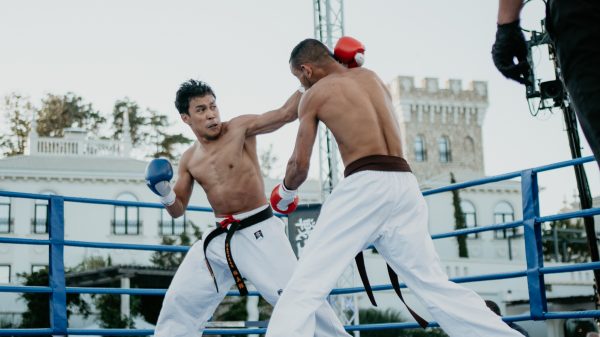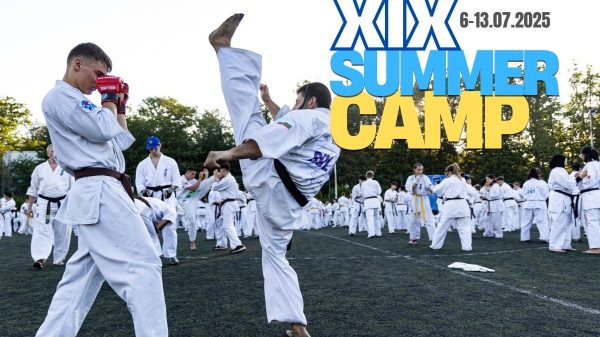Kyokushin Karate and Taekwondo are two popular martial arts with distinct philosophies, techniques, and training methods. Though they share some similarities, they come from different cultural backgrounds and focus on unique approaches to martial arts. Here’s a breakdown of the main differences between the two:
1. Origins and History
- Kyokushin Karate: Originated in Japan and was founded by Masutatsu Oyama in the 1950s. Kyokushin is a full-contact, hard style of karate, emphasizing real combat scenarios and discipline.
- Taekwondo: Originated in Korea and has roots going back hundreds of years, but modern Taekwondo was developed in the 1940s and 1950s, combining Korean and Japanese martial arts influences. It places a heavy emphasis on athleticism and kicking techniques.
2. Philosophy and Principles
- Kyokushin Karate: Kyokushin is known as the “ultimate truth” style of karate. It emphasizes mental and physical discipline, perseverance, and the concept of pushing beyond one’s limits. The training is intense, and practitioners are encouraged to build both inner and outer strength.
- Taekwondo: Taekwondo translates to “the way of the foot and the fist.” It emphasizes self-defense, discipline, and respect, but also aims to promote health and physical fitness. In competitive Taekwondo, especially the World Taekwondo (WT) style, sportsmanship and athletic performance are highly valued.
3. Techniques and Fighting Style
- Kyokushin Karate: Kyokushin uses full-contact techniques, with a strong focus on powerful strikes, especially with the hands and low kicks. Practitioners use punches, kicks, knees, and elbows to strike the body and legs (though head punches are typically not allowed in sparring). Kyokushin emphasizes practical, close-range combat and conditioning the body to withstand impact.
- Taekwondo: Taekwondo is known for its dynamic, high, and spinning kicks. Kicks are the primary focus, especially to the head and torso. In WT (Olympic-style) Taekwondo, hand techniques are usually limited to punches to the body, and high-speed kicks score higher in competitions. Taekwondo’s style is more about speed, agility, and flexibility rather than full-contact power.
4. Sparring Rules and Competition Style
- Kyokushin Karate: Kyokushin sparring is often full-contact and emphasizes bare-knuckle fighting. Points are scored based on clean, effective strikes to the body and legs. Knockouts are common in competitions, and practitioners aim for powerful, decisive strikes. Punches to the face are generally not allowed, but kicks to the head are permitted.
- Taekwondo: Taekwondo, particularly the WT style, uses a point-based, semi-contact system in competitions. Points are awarded for successful kicks to the torso and head, with spinning and head kicks scoring higher. Athletes wear protective gear, including chest protectors and headgear. Taekwondo competitions prioritize speed, precision, and timing over raw power.
5. Training Focus
- Kyokushin Karate: Training in Kyokushin includes conditioning exercises, sparring, and kata (pre-arranged forms). Practitioners build mental and physical resilience through intense workouts, including body-hardening drills, bag work, and body conditioning to endure pain. Kyokushin also places a strong emphasis on low, powerful kicks, especially targeting the legs and body.
- Taekwondo: Taekwondo training emphasizes flexibility, agility, and kicking drills. Practitioners spend a lot of time on leg strength and mobility to achieve high, fast kicks. They also practice forms (called “poomsae”) to develop technique and rhythm. Olympic-style Taekwondo focuses on footwork and distance management, with quick and precise movements being key.
6. Forms and Patterns (Kata vs. Poomsae)
- Kyokushin Karate: Kyokushin uses traditional karate kata, which are pre-arranged sequences of movements meant to simulate fighting multiple opponents. Kata practice is essential for building foundational techniques, muscle memory, and focus.
- Taekwondo: In Taekwondo, forms are known as “poomsae.” These are also pre-arranged movements that help practitioners develop balance, rhythm, and coordination. Poomsae emphasize high kicks and dynamic movements, reflecting the art’s focus on agility and speed.
7. Body Conditioning and Toughness
- Kyokushin Karate: Kyokushin practitioners undergo rigorous conditioning to toughen the body, particularly through drills that build resilience and prepare them for full-contact sparring. Body hardening is a core part of Kyokushin training, making practitioners resilient to strikes.
- Taekwondo: While Taekwondo athletes train extensively for endurance and speed, they do not focus as much on body conditioning to absorb hard strikes. The protective gear in competition and the nature of semi-contact sparring mean that toughness training is less emphasized than agility and reflexes.
Summary
| Aspect | Kyokushin Karate | Taekwondo |
|---|---|---|
| Origin | Japan | Korea |
| Focus | Full-contact power, body conditioning | Speed, high kicks, agility |
| Philosophy | Discipline, perseverance, strength | Self-defense, athleticism, sportsmanship |
| Main Techniques | Powerful strikes, low kicks, body punches | High, fast kicks, spinning kicks |
| Sparring Style | Bare-knuckle, full-contact | Semi-contact, point-based |
| Training | Intense conditioning, kata, practical sparring | Kicking drills, poomsae, agility training |
Conclusion
Both Kyokushin Karate and Taekwondo are effective martial arts that require dedication and discipline, but they differ significantly in style, philosophy, and training focus. Kyokushin Karate emphasizes full-contact power and resilience, while Taekwondo focuses on high-speed kicks, agility, and sportsmanship. Each martial art offers unique benefits, so the best choice depends on your personal goals, whether it’s building strength and resilience or achieving athleticism and flexibility.


































